Step-by-step instructions for growing garlic outdoors for beginners: steps and tips from experienced farmers
Garlic has many health benefits. It is used in cooking, food processing, and traditional medicine. Home-grown garlic is much healthier than store-bought garlic. It is not difficult to grow a hot spice - it is enough to follow the basic rules of agricultural technology and follow the advice of experienced gardeners.
The content of the article
- How to choose the right planting material
- Winter or spring - what to choose?
- How to properly grow garlic outdoors
- Growing tips
- Where to start a garlic business
- Conclusion
How to choose the right planting material
Garlic propagates vegetatively. Even in winter varieties, flowering arrows do not give seeds at all, but air bulbs (bulbs).
To obtain teeth, separate the head of garlic in parts should be careful not to spoil the root part of the cloves and the protective scales. If the result is important, then all the cloves in a row for planting will not work.
Planting a tooth, which is 2 times less than the standard one, will affect the head - it will grow 3-4 times less than it should. Even if out of 5 large cloves, 1 is slightly smaller than the others, it will have to be rejected. Only such rigorous selection will yield a harvest of large heads.
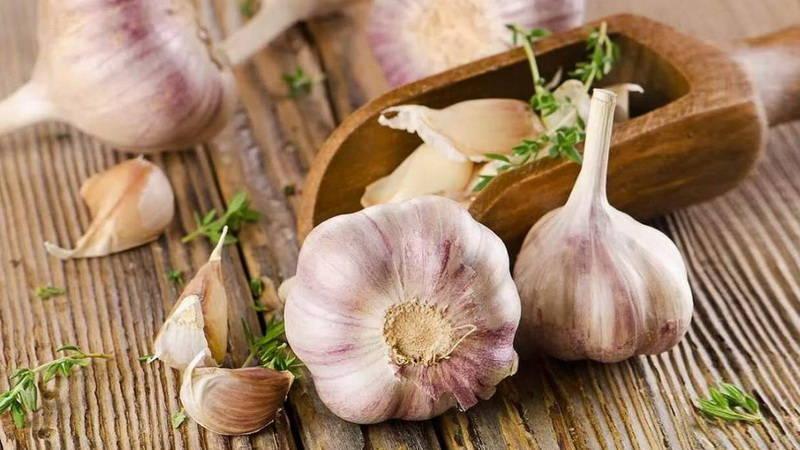
Pay attention to the number of teeth in the head. If there are no more than 4 of them (even if they are huge), you should not use the planting head, as this indicates the degeneration of the culture.
reference... If a variety with several rows of teeth is used, then only the outer row is suitable for growing.
Garlic is also grown from air bulbs. It is very easy to obtain seed. Simultaneously with planting the cloves, sow the bulbs, which are ripe on the garlic arrows.
Make the sowing dense, with a planting depth of no more than 2-3 cm. Next year, one-toothed beetles will grow. Use them already as seed for growing full heads.
Winter or spring - what to choose?
The first question that arises among summer residents concerns the yield of winter and spring garlic. There is a significant difference between species.
Winter garlic is planted in September-October, but it is also possible in spring. The high-yielding variety gives up to 130 kg from 1 are. The weight of the head reaches 150 g. The crop is harvested in July-August and stored until December-January.
Spring garlic is planted in the garden in March-April, from 1 hundred parts to 60-80 kg of harvest are harvested. The head weighs 30-60 g. The crop is harvested in August-September. The storage period is up to June-July.
Winter garlic is large and productive, but it is not stored for long, it should be used until the end of the year, and spring garlic can lie until summer without loss of quality.
Output: Don't dwell on one variety of garlic.
What is the difference between spring garlic and winter garlic
The spring variety differs from the winter one in appearance and other characteristics:
- In winter crops, the teeth are large, uniform in size and grow evenly around a strong stem that is inside the head. In spring, the teeth are smaller, there are much more of them and they grow chaotically. The stem is also present inside the bulb, but it is not as strong.
- Winter garlic, in the process of growing, shoots a flower arrow, which forms the so-called bulbs (air bulbs).Spring garlic does not have arrows except for the Gulliver variety. Spring garlic is propagated by cloves.
- Winter garlic is harvested by mid-July. This species is usually used for summer consumption and conservation because it does not store well. Spring is stored for a long time, the harvest is harvested at the beginning of autumn.
How to properly grow garlic outdoors
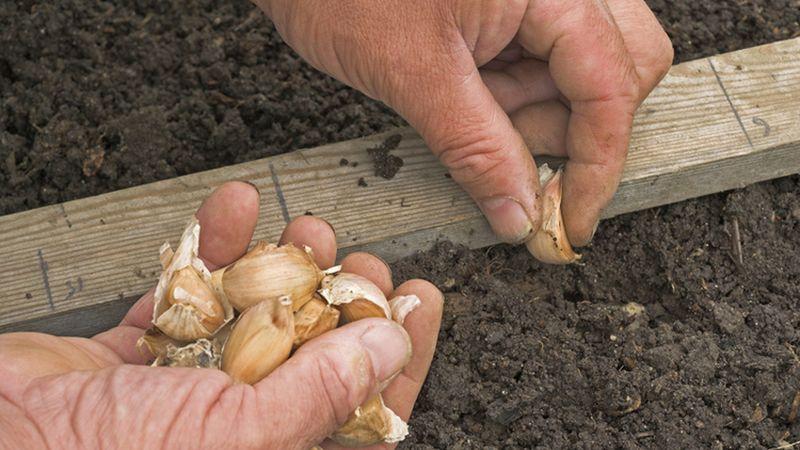
Rules for growing garlic outdoors:
- The culture should not be sown deeply so that the garlic does not begin to rot in the moisture accumulated underground.
- Garlic is grown in areas that are well lit.
- Natural or synthetic fertilizers are applied before planting.
- Only large and healthy material without visible damage is suitable for planting.
- The bed with winter garlic is mulched and covered with brushwood to catch the snow.
- The soil is prepared approximately 10-14 days before the intended planting. If you sow garlic in a freshly dug garden bed, then with the shrinkage of the soil, the culture will deepen, which will prevent its timely emergence.
- In one place they sow no more than 2-3 times in a row.
Preparation of planting material
The main planting material is considered to be cloves of all varieties. To obtain a large harvest, they must be properly prepared.
The teeth are carefully selected. Get rid of double, small and cracked ones.
The teeth are kept in a solution of wood ash for a couple of hours (for 1 kg of substance, half a bucket of water). Before use, the solution must be boiled and then cooled.
Arrows with air bulbs dry thoroughly and choose the largest seeds for planting.
Soil preparation and crop rotation
The soil for sowing must be fertile, moisture-absorbing and drained. An excellent option is loam. The main thing is that the soil should not be dry. Shaded areas under tall trees or bushes are not suitable for planting.
Dig up the garden bed 14 days before sowing and fertilize it. This will require 2 tbsp. l. potassium salt and superphosphate, as well as a bucket of humus. This amount of fertilizer is enough for 1 sq. m beds.
Garlic precursors in the garden
Garlic grows well in the place of potatoes, cucumbers and zucchini, as well as legumes. You should not plant it after the onion, as the harvest will be of poor quality. Similarly, do not grow it after carrots and tomatoes.
The culture feels good in the neighborhood of raspberries, strawberries, currants or roses. An additional plus - garlic repels the pests of these plants.
Methods and timing of planting garlic
The winter variety is planted both with whole heads and with cloves.
When planting, the slices are cleaned of dry scales and soaked in a growth-stimulating solution for 7-9 hours. Planting with heads will require cleaning the bottom of the garlic from old roots. After that, the heads or lobules are folded into a soft, wetted cloth and then into a plastic bag. Wrap so that there is a hole for fresh air. Store in a cool place and do not allow the fabric to dry out.
Garlic for planting in spring is prepared in 1 month, during which time roots up to 5 cm long will appear on the slices. There is no specific deadline for planting in spring. And if they are planted in the fall, they do it 40 days before the onset of frost (the dates vary in different regions).
Spring garlic is prepared a few days before planting. The heads are divided into teeth and cleaned of dry scales. External teeth are suitable for planting. They are kept for 2 hours in a weak solution of potassium permanganate, then wrapped in a damp cloth and placed in a bag. They keep them in the cellar or on the bottom shelf of the refrigerator for two days.
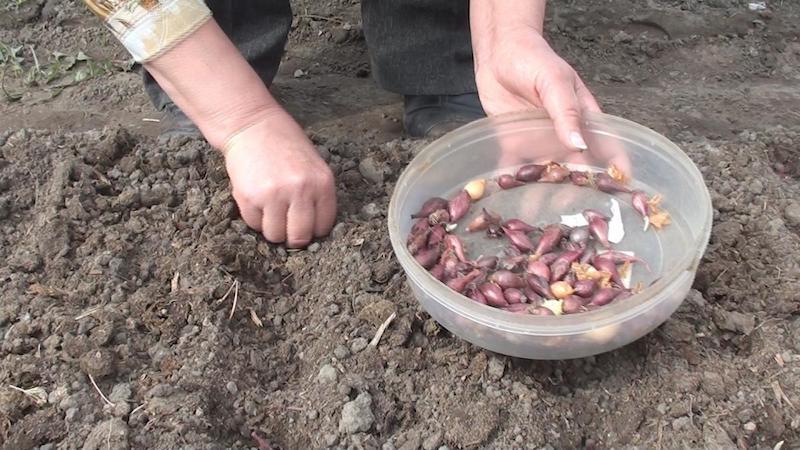
How to water garlic
Garlic is a garden crop that is considered one of the most moisture-loving crops. If he lacks moisture, then the garlic arrows change their color to bluish-white. Due to a lack of moisture, the quality of the heads will decrease.
In the initial stage of the growing season, use 10 liters of water per 2 m². As the garlic ripens, the amount of water is reduced. With the onset of August, watering can be stopped altogether.
After watering, the soil is loosened, weeded and mulched. Due to mulch, it will be possible to keep the moisture longer and additionally saturate the soil with nutrients. For this, hay or sawdust is used.
Winter and spring varieties can be watered with fertilizer. For this, liquid solutions are used. Four such waterings are done per season. As soon as the sprouts appear, perform first feeding ordinary mullein or urea (20 g per 10 liters of water).
The second time they use nitrogen fertilizers, they are applied after 2 weeks. During the formation of the heads, the garlic is watered with a solution with the addition of superphosphate. This procedure is repeated at intervals of 14 days.
Garlic is a sensitive crop for watering. If there is little moisture, the plants wither, development and growth slow down. But this does not mean that you need to add water to the garlic every day.
Attention! High humidity can cause garlic to rot.
Harvesting and storing the harvest of garlic
The most intense growth of the head occurs at the beginning of the drying of the lower leaves. To collect a rich harvest, the exact time is determined, after which the garlic is collected for storage.
With early harvesting, the garlic will ripen on its own, but the bulb will not grow to its maximum size - there is a risk of losing up to 15% of the harvest. With late harvest, the garlic overripe. The husk flakes off, while the cloves fall out of the head, dry out and deteriorate.
The harvest time is determined by the appearance of the plant:
- Arrowhead varieties are harvested after the upper leaves wither and the outer shells of the garlic head dry.
- The non-firing ones harvest as the false stems fall.
How to prepare the garlic for storage: cut the tops 2-3 cm from the edge of the head, remove the roots, leaving 3-5 mm near the bottom. Dry in the open air. Then collect in bundles or braids and send for storage.
Garlic is stored in the attic or on the upper steps of the cellar.
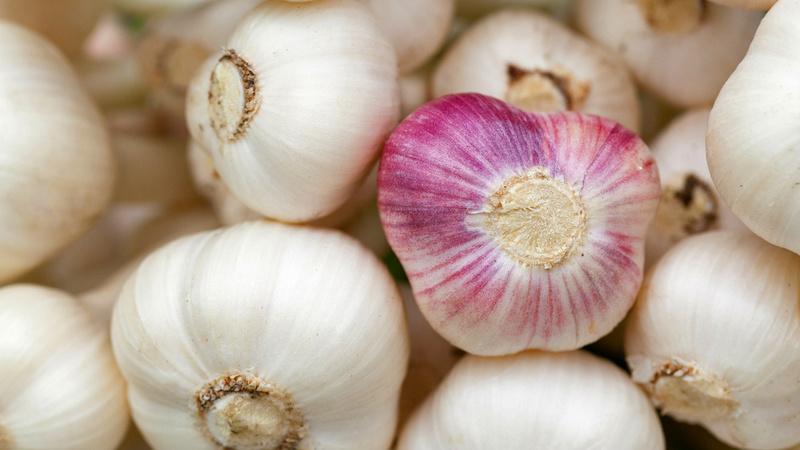
Fertilization and pest control
Garlic bushes are attacked by pests, among which the centipede, onion fly, nematode and moth are most common. To combat pests, sowing beds are sprayed with biological insecticides (Aktofit, Cesar, Gaupsin, Bizar, etc.) during the appearance of butterflies and caterpillars.
Observance of crop rotation and correct agricultural technology is also of great importance. Grow garlic in the same place for no more than 3 years in a row. Destroy plant debris. Timely loosen and feed with mineral fertilizers.
Common diseases of garlic and how to fight them
Spring and winter garlic are prone to the same diseases that are difficult to distinguish without some experience. There are many diseases that can infect a plant.
Frequently encountered:
- mosaic;
- aspergillosis;
- yellow dwarfism;
- rust;
- peronosporosis;
- fusarium.
The main measure for combating viral diseases of garlic is treatment with biological fungicides ("Gaupsin", "Fitosporin", "Mikosan", "Pentafag", "Baikal Em1").
Read also:
How to grow large garlic in your garden.
The nuances of care in autumn, winter, spring and summer
Although garlic is unpretentious, like any vegetable, it requires constant care during cultivation. Proper maintenance will accelerate growth and improve yields.
The soil must be periodically moistened so that the bushes do not dry out. Water every 3-4 days. If the weather is cloudy for a long time, reduce the number of waterings to 1 time per week.
After watering, the soil is loosened, since the earth is covered with a dense crust. If you do not get rid of it, the supply of oxygen and moisture to the roots will deteriorate.
The first time the soil is loosened 15 days after planting the seedlings. Subsequent weeding is performed after 10 days. During loosening, all weeds are removed, since they reduce the fertility of the soil.
Growing tips
How to grow garlic in the garden? Secrets of a Strong and Healthy Harvest:
- As soon as the leaves of garlic appear from the ground, the planting is fed with nitrogen fertilizer. To do this, dissolve 1 tbsp in 10 liters of water. l. urea, 10 liters per 2 sq. m.
- When the leaves grow to 10-15 cm, the soil is scooped up from the bulb, covered with ash and the earth is returned to its place. This operation is carried out when the arrows appear.
- When removing the arrows of garlic, a few pieces are left. They determine the harvest time. As soon as the shell cracks on the heads and the bulbs begin to look out, it's time to collect the garlic.
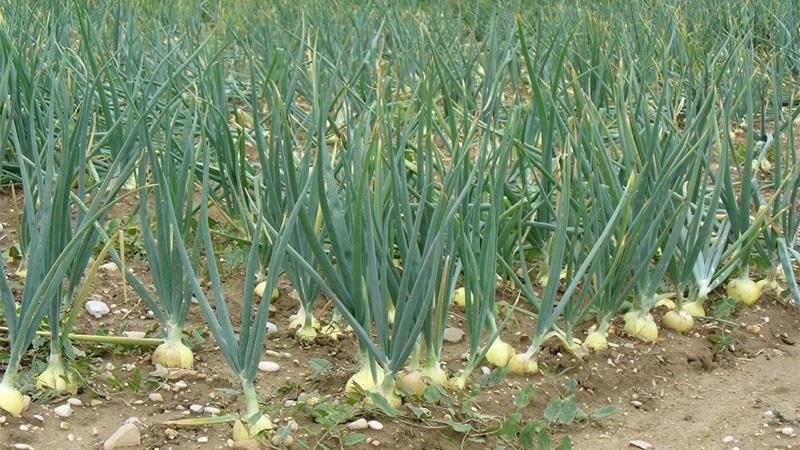
Where to start a garlic business
The first year will require significant investment, but if you do everything right, in 12 months the business will pay off.
Required:
- paperwork;
- lease of land for cultivation;
- purchase or rental of special equipment;
- hiring workers;
- raw materials;
- points of sale.
In the following years, profits will increase, as there will be no such costs as in the first year.
Advantages and disadvantages
Growing garlic for sale is considered profitable. If you do not deviate from agricultural technology, then in any case, you will get profit.
The benefits of the garlic business:
- The vegetable is stored for a long time. If the storage conditions are properly ensured, it can be sold as required, in small batches.
- The popularity of garlic. It is in demand all year round, so there are always ways to sell it.
- Garlic grows in any soil, as it belongs to unpretentious crops. The main thing is to strictly follow the technology.
- You can start a garlic growing business from a small summer cottage in order to master all the basics and pitfalls and not make large investments right away.
Disadvantages of growing a crop:
- Growing on a large scale requires significant additional costs for special equipment and hiring workers.
- Under unfavorable climatic conditions, the culture may die, so the process must be carefully monitored.
- You cannot grow garlic on the same plantation for more than 3 years in a row. This leads to depletion of the soil and, as a consequence, to the degeneration of culture.
Business profitability from 1 ares and 1 hectares
The calculation of profitability depends on the size of the sown area, income is calculated in the same way. If agricultural technologies are observed, 130 kg of harvest is obtained from 1 weave, therefore, from 1 hectare of land - about 13 tons.
Plowing, harrowing, soil preparation directly for planting for 10 acres will cost 3000 r. The cost of planting material will be approximately 10,000 rubles, since at least 100 kg will be needed to sow an area of 10 acres (with the cost of seed material being 100 rubles per 1 kg). To fertilize the soil, you need 4 tons of peat or humus. All this requires 17,000 rubles. Therefore, costs per hectare will be 100 times higher.
From 1 hectare, from 10 to 50 tons of harvest is obtained, depending on the variety of garlic. If we take into account that 1 kg is sold for 100 rubles, then the income will be 1 million rubles. With the best outcome of events, this amount increases up to 5 times.
Based on the calculations presented, we can conclude that if everything is done correctly, the business will pay for itself already in the first year of its existence.
Conclusion
Garlic is not only a healthy product, but also a promising vegetable for making money. Choose the method you like, or rather several, in order to compare the results later and grow a huge crop.